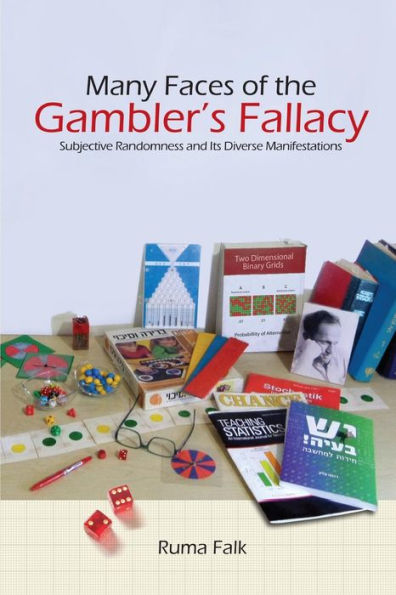Many Faces of the Gambler's Fallacy: Subjective Randomness and Its Diverse Manifestations
The series of heads and tails obtained when tossing a fair coin exemplifies a random sequence. Randomness defies a strict definition, yet it is widely used in daily and scientific discourse. When perceiving or producing randomness, people err by exaggeratedly expecting a change after a few identical symbols. This is the gambler's fallacy (GF). Diverse real manifestations of GF, in casino or lottery decisions, expressions in fiction and art, and uses in deciphering codes, are all described, interwoven with stories and anecdotes. The roots of GF are presumably ascribed to one's inability to forget or ignore previous stimuli in a sequence. Students, not only of psychology, and other inquisitive readers may find the GF issue challenging.
1125292091
Many Faces of the Gambler's Fallacy: Subjective Randomness and Its Diverse Manifestations
The series of heads and tails obtained when tossing a fair coin exemplifies a random sequence. Randomness defies a strict definition, yet it is widely used in daily and scientific discourse. When perceiving or producing randomness, people err by exaggeratedly expecting a change after a few identical symbols. This is the gambler's fallacy (GF). Diverse real manifestations of GF, in casino or lottery decisions, expressions in fiction and art, and uses in deciphering codes, are all described, interwoven with stories and anecdotes. The roots of GF are presumably ascribed to one's inability to forget or ignore previous stimuli in a sequence. Students, not only of psychology, and other inquisitive readers may find the GF issue challenging.
36.78
In Stock
5
1

Many Faces of the Gambler's Fallacy: Subjective Randomness and Its Diverse Manifestations
198
Many Faces of the Gambler's Fallacy: Subjective Randomness and Its Diverse Manifestations
198Paperback
$36.78
36.78
In Stock

Product Details
| ISBN-13: | 9781540657701 |
|---|---|
| Publisher: | CreateSpace Publishing |
| Publication date: | 11/28/2016 |
| Pages: | 198 |
| Product dimensions: | 6.00(w) x 9.00(h) x 0.51(d) |
About the Author
From the B&N Reads Blog
